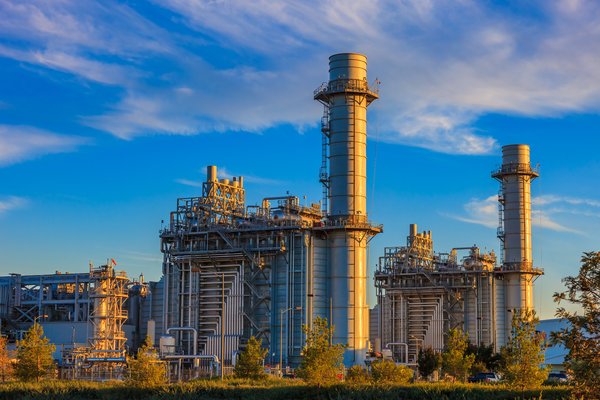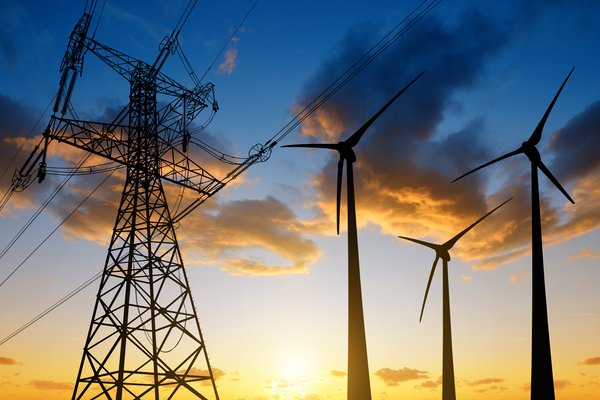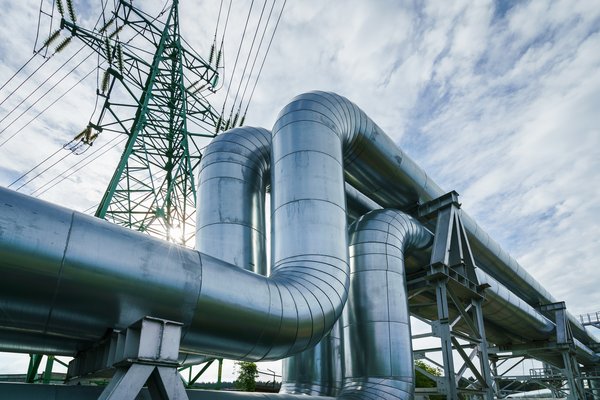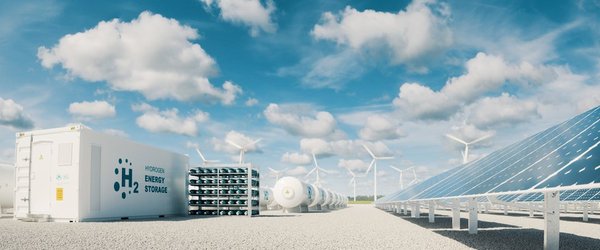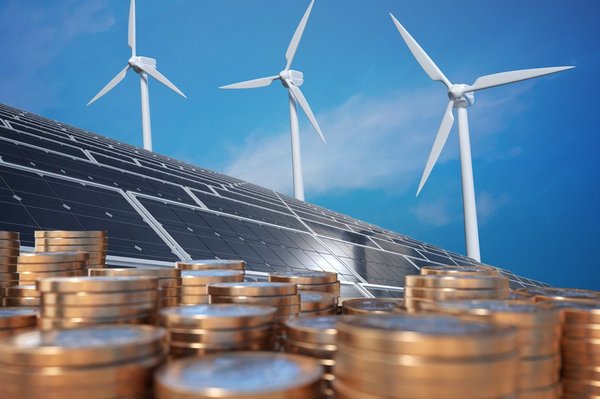Energy stocks are important for investors to understand because the energy sector is vital to the global economy. It produces and supplies the fuels and electricity needed to keep the economy humming.

The energy industry includes companies involved in the following activities:
Renewable energy stocks
Renewable energy stocks
These companies manufacture components to produce electricity using renewable resources such as solar, wind, hydroelectric, and geothermal power. They also include companies that operate and develop renewable energy-generating facilities.
- Solar energy stocks: This subgroup of renewable energy focuses on manufacturing solar panels and components to generate electricity from the sun.
- Wind energy stocks: This subgroup focuses on manufacturing wind turbines and blades.
- Hydrogen stocks: These companies focus on producing hydrogen, a potentially emission-free fuel that could replace fossil fuels in the energy industry.
Oil and gas stocks
Oil and gas stocks
These companies focus on finding, producing, transporting, storing, refining, and exporting fossil fuels.
- Oil stocks: Oil companies focus on locating, producing, transporting, and refining crude oil.
- Natural gas stocks: Natural gas companies concentrate on finding, producing, transporting, and exporting natural gas.
- Liquefied natural gas stocks: Liquefied natural gas (LNG) companies develop and operate facilities to liquefy and export natural gas.
- Refining stocks: Refining companies process crude oil into refined petroleum products such as gasoline, diesel, and jet fuel.
- Pipeline stocks: Pipeline companies operate pipelines and other infrastructure used to transport, process, store, and export energy products.
Utility stocks
Utility stocks
- Utility stocks: These companies generate and distribute electricity and natural gas to customers.
- Electric utility stocks: Electric utility companies generate and distribute electricity to customers.
This broad industry is crucial to providing the economy with the energy it needs. It's also an important one for investors to understand.
Best Energy sector stocks to buy in 2024
Best Energy sector stocks to buy in 2024
Hundreds of public companies focus on the production and distribution of energy. However, a few leaders stand out because of their size and financial strength. Here are five of the best energy stocks to consider buying in 2024:
| COMPANY | TICKER | WHAT IT DOES |
|---|---|---|
| Brookfield Renewable | (NYSE:BEP)(NYSE:BEPC) | Globally diversified renewable energy producer. |
| ConocoPhillips | (NYSE:COP) | Globally diversified oil and natural gas producer. |
| Chevron | (NYSE:CVX) | A globally diversified and integrated energy company. |
| NextEra Energy | (NYSE:NEE) | Leading utility and renewable energy producer. |
| Enbridge | (NYSE:ENB) | Leading pipeline and utility company. |
Here’s a closer look at some of the best energy stocks in the industry:
1. Brookfield Renewable
1. Brookfield Renewable
Brookfield Renewable is a leading global renewable energy energy producer. It operates hydroelectric, solar, wind, and energy transition assets. The company sells the power produced by these assets under long-term fixed-rate power purchase agreements (PPAs) to electric utilities and other large power users.
The contracts enable Brookfield to generate relatively steady cash flows. It pays out a large portion of that money to investors via an attractive dividend. The company retains the balance to acquire, develop, and expand its renewable energy operations.
Brookfield Renewable has an enormous backlog of renewable energy development projects. Combined with other growth drivers such as acquisitions and higher power prices, Brookfield expects to increase its funds from operation (FFO) per share by more than 10% annually through 2027. That should support 5% to 9% annual dividend growth, making Brookfield an excellent renewable energy dividend stock.
2. ConocoPhillips
2. ConocoPhillips
ConocoPhillips is a diversified oil and natural gas producer. It has operations around the world and uses several methods to produce oil and natural gas.
ConocoPhillips stands out for its low operating costs. It has an average cost of supply of $32 a barrel. ConocoPhillips complements its low cost of supply with a strong balance sheet. It has an investment-grade bond rating backed by a low leverage ratio. That provides it with plenty of cushion to weather frequent periods of low oil and gas prices.
ConocoPhillips’ low operating costs position it to generate significant cash flow in the coming years. The oil and natural gas company estimates it can produce a cumulative $115 billion in free cash flow over the next decade, assuming oil prices average $60 per barrel. With oil prices well above that level as of mid-2023, ConocoPhillips could generate an even bigger gusher of free cash flow.
The company anticipates returning a significant portion of its windfall to investors in the coming years. It plans to send them $11 billion in 2023 alone, thanks to higher oil prices. ConocoPhillips uses a variety of methods to return cash to shareholders, including share repurchases, paying a growing quarterly dividend, and making variable return of cash payments (an incremental dividend payment from its excess cash) as it generates excess cash due to higher oil prices.
Commodities
3. Chevron
3. Chevron
Chevron is a leading global energy company. It boasts a globally integrated oil and gas business that includes exploration and production assets, refining capabilities, and a chemicals business. The company’s large scale and integrated operations help it weather the volatility in the energy sector.
Chevron uses the cash flows generated from its legacy oil and gas operations to pay a growing dividend, repurchase shares, and invest in the future. Chevron increased its dividend for the 36th straight year in 2023. It also plans to buy back between $10 billion and $20 billion of its stock each year.
Part of Chevron’s investment in the future is in reducing its carbon emissions. The company is investing in carbon capture and storage technology, as well as green hydrogen. It also acquired Renewable Energy Group in 2022 for $3.15 billion to bolster its renewable fuels capabilities. The deal will accelerate Chevron’s ability to achieve its goal of expanding its renewable fuels production capacity to 100,000 barrels per day by 2030.
Overall, Chevron aims to supply the fuels for today’s economy while building toward the lower-carbon fuels it requires in the future. The balance makes it an ideal choice for investors seeking a way to invest in the energy transition from fossil fuels to cleaner alternatives.
4. NextEra Energy
4. NextEra Energy
NextEra Energy is one of the country's largest electric utility companies. It's also a global leader in producing power from the wind and sun through its energy resources segment, which sells clean energy to other utilities and end users around the country.
These businesses generate relatively stable cash flow. It sells and distributes power backed by government-regulated rates and fixed-price PPAs with customers. The business model is very resilient because businesses and households need a steady supply of power.
NextEra Energy has one of the best financial profiles in the electric utility sector. It features one of the highest credit ratings in its peer group. NextEra also has a conservative dividend payout ratio for a utility, allowing it to pay a stable and growing dividend. The company expects to increase its payout at a 10% annual rate through 2024, making it an excellent renewable energy dividend stock. Its strong financial profile also allows it to make significant investments for the future.
The company launched its Real Zero plan in 2022 to eliminate carbon emissions from its operations by 2045. NextEra will significantly increase its solar energy production, maintain its nuclear energy fleet, and replace natural gas in its power plants with green hydrogen and renewable natural gas. These investments should boost its earnings while eliminating its emissions, producing a win-win outcome for shareholders and the planet.
Capital
5. Enbridge
5. Enbridge
Enbridge is one of the largest energy infrastructure companies in North America. It has four core operating segments:
- Liquids pipelines: It moves 30% of the oil produced in North America.
- Gas transmission & midstream: Enbridge transports almost 20% of all the gas consumed in the U.S.
- Gas distribution: It operates North America's third-largest natural gas utility by customer count.
- Renewable energy: Enbridge has a diversified renewable energy platform, including a growing European offshore wind business.
Enbridge's leading energy infrastructure portfolio generates very stable cash flow backed by long-term contracts and government-regulated rate structures. The company distributes 60% to 70% of that steady cash to investors via a very attractive dividend. It retains the rest to help finance its continued expansion.
The company has a multibillion-dollar backlog of commercially secured expansion projects under construction, giving it lots of visibility into future growth. Enbridge expects its cash flow per share to increase by about 3% per year through 2025 and at a roughly 5% annual rate over the medium term.
Enbridge's growing cash flow should allow it to continue increasing its dividend. The company delivered its 28th consecutive annual dividend increase in 2022.
Investing in the energy sector
How to invest in the energy sector
The energy sector is a challenging one for investors, especially when it comes to oil and natural gas companies. Energy prices can change in a heartbeat. Volatility can have a massive impact on the sector, as well as on the global economy.
We’ve seen examples of the volatile market in recent years. Oil and natural gas prices plunged during the early days of the COVID-19 pandemic as demand dried up. They rebounded sharply in 2021 as consumption recovered. Energy prices continued their ascent in 2022, hitting new highs after Russia invaded Ukraine. However, they began to cool off in late 2022 and into 2023 on concerns that the global economy was slowing down.
Because of the impact commodity price volatility can have on the energy sector, investors need to understand how to invest in energy stocks. That includes keeping risks in mind and not allocating too much of a portfolio to one energy stock or the entire industry. Investors should focus on oil and natural gas companies with the financial and operational strength to survive if industry conditions significantly deteriorate.
Factors that increase an energy company's durability include:
- A low-risk business model: For oil and natural gas producers, this means having diversified operations and low production costs. Meanwhile, energy infrastructure companies should have stable revenue with minimal exposure to fluctuations in volumes or pricing, such as operations supported by regulated rates or long-term fixed-fee contracts.
- A strong financial profile: Balance sheet factors to consider are a high investment-grade credit rating, lots of liquidity (cash on hand and borrowing capacity), and minimal near-term debt maturities. In addition, an energy company should have a conservative dividend payout ratio compared to its peers.
- Manageable capital spending programs primarily financed with post-dividend free cash flow and prudent use of debt.
Energy companies with these characteristics will be in a better position to withstand the inevitable cyclical downturns. That means they will still be around when market conditions improve. They will also have more flexibility than their weaker peers to capture opportunities that can create value for their investors.
Related investing topics
Are energy stocks right for you?
The energy sector is vital to the global economy because it provides the fuel and power needed to drive trade and travel. However, when the economy slows, as many fear will happen in 2023, it can have a major impact on energy demand and prices. That can put significant weight on energy stock prices.
The best energy stocks to buy are those that can easily survive a downturn and thrive when market conditions improve. Energy stock investors should also consider putting more attention on cleaner energy companies using renewable sources. Focusing on renewables is especially important during the Biden administration, given its pledge to put the country on a path toward an emissions-free future.
Energy Stock FAQs
What are the best energy stocks to buy?
A few leaders stand out because they’re larger in size and have strong financial profiles. Here are a few of the top energy companies to consider:
- Brookfield Renewable.
- ConocoPhillips.
- Chevron.
- NextEra Energy.
- Enbridge.
Are energy stocks risky?
The energy sector is vital to the global economy because it provides the fuel and power needed to drive trade and travel. However, when the economy slows, as many fear will happen in 2023, it can have a major impact on energy demand and prices. That can put significant weight on energy stock prices.
Conversely, when the economy hits the accelerator, demand soars and usually takes prices up with it. Because of that, investors should focus on the stocks of companies that can easily survive a downturn. In addition, they should consider focusing more attention on cleaner energy companies using renewable sources.
What are the best utility stocks?
The best utility investments are companies with a top-notch financial profile and visible growth prospects. Each of the companies below meets those criteria and has the potential to produce above-average total stock returns -- dividend yield plus stock price appreciation.
Here is a list of standout companies, followed by our assessment of each investment:
American Water Works is the largest publicly traded water and wastewater utility in the U.S.
Brookfield Infrastructure Partners owns a diversified portfolio of infrastructure businesses.
NextEra Energy operates regulated electric utilities in Florida. It also owns a nonregulated competitive energy business that operates natural gas pipelines and renewable energy projects.
Matthew DiLallo has positions in Brookfield Renewable, Brookfield Renewable Partners, Chevron, ConocoPhillips, Enbridge, and NextEra Energy. The Motley Fool has positions in and recommends Brookfield Renewable, Enbridge, and NextEra Energy. The Motley Fool recommends Brookfield Renewable Partners and Chevron. The Motley Fool has a disclosure policy.










